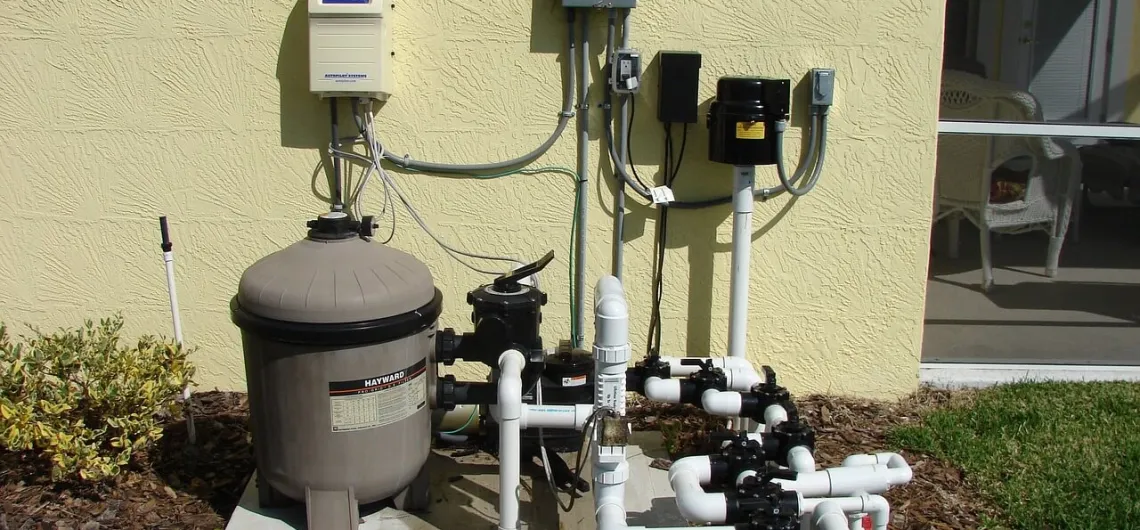If you own a pool you might be familiar with chlorine as a water cleaner. With enough evidence now, reverse osmosis is bound to replace chlorine as a substitute for cleaning. Swimming pools are a natural sight in many households in fairly warm regions, hotels, resorts, amusement parks and more. Owners can well understand how difficult is the process of cleaning the pool once or twice a week. It is traditionally done by pumping out the water from the pool and putting it into a water filtration system. Meanwhile, the actual pool is cleaned manually for any algae layer formation. Once these two procedures are completed, the water is poured back into the pool. Seems like a simple process, but for a pool with hundreds of gallons of water, it is as hectic as it can get. Which is why pool owners use chlorine as a cleanser in the water to extend the number of days between learning time.
Why Chlorine?
Chlorine is harmful to any small living micro-organism and kills bacteria harmful for the human body. This also includes organisms responsible for various diseases that could be present in the water. If you are one to swim, you might find your skin to get extremely dry and eyes to turn red after a good swim in the pool. This is a result of the chlorine present in the swimming pools. As long as its effects are not beyond these two, chlorine can be safely used in swimming pools. However, it does affect the cells and tissues of your body as even we, like the microorganisms are living beings. And so if chlorine is used in a large amount, it is harmful to us, even fatal at times. Chlorine until recently was used heavily for purifying drinking water too in the local water treatment plants before reverse osmosis came along. Its effects after a large amount of chlorine were mixed as treatment were far too much to ignore. And hence the filtration systems were shifted to reverse osmosis in households.
How are swimming pools cleaned?
If the process can be used for cleaning drinking water, it can surely clean commercial and public swimming pools as well. But there are two ways in which pools can be cleaned.
- High-End filtration system and
- Reverse Osmosis
High-end filtration systems mostly use charcoal and activated carbon in their structures. These two have porous surfaces and are known to attract impurities including harmful gas particles. High-end filters are made such that they do more than just eliminate impurities. The system has materials ingrained which are responsible for removing particles as small as 1 micron. Not only this, while purchasing a high-end filter, do make sure that to look for systems that add negative ions to the water for hyper hydration. Because of this, the skin remains hydrated, moisturized and it helps in eliminating skin problems. Along with this, it keeps the skin fresh and rejuvenated hair which is usually damaged by chemicals.
High-end filter without cartridges would be the best as they reduce the cartridge replacement cost. Also, the filters are capable of running on periodic maintenance for about 7 to 10 years.
What is reverse osmosis pool cleaning?
This system works on the core process of reverse osmosis. This is, pushing water through a semi permeable membrane to get purified water on the other side. The purified water is stored in a storage tank before being poured back into the pool. The process is very effective in removing sediments, TDS, chemicals as well as microorganisms. The reverse osmosis system also has with it a mineralizing chamber that adds minerals to the water that might have been eliminated in the process. The final result is pure, mineral and odorless water.
However, reverse osmosis is expensive to operate if swimming pools are considered. This is in comparison with the high-end filter. RO purifiers usually reject more water than pouring water into the pools which are why every time, the pool will require more water from the supply. For every gallon of purified water, the system rejects two gallons. This means one will have to get water as much as three times of the capacity of the pool. However, this fact is largely dependent on the source of water and hence varies a lot.
Because the process is so accurate with its purification parameters, it is used in residential purifiers, but for commercial purifiers used to clean pool water, it would be on the owner to decide which filter suits best to the pool water supply. Moreover, each system gives a very good swimming experience to the swimmers and is definitely better than using chlorine as a disinfectant.
Author’s Bio:
Ampac USA is a leading manufacturer of advanced reverse osmosis water treatment systems. For over 30 years the company has been providing its customers and clients around the world solutions to their water treatment problems. With years of an impressive track record, Ampac strives to develop solutions to make reverse osmosis systems, advanced for improved quality and cost efficiency.










